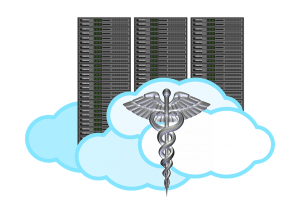Why Healthcare Companies Are Moving To The Cloud
 Moving to the cloud can be a complex and precise process, but it’s a move more and more industries are making because of the many benefits it provides to the enterprise. The healthcare industry is no exception, and in fact is in some ways cloud computing in healthcare is leading the way, demonstrating how effective a move to the cloud can be.
Moving to the cloud can be a complex and precise process, but it’s a move more and more industries are making because of the many benefits it provides to the enterprise. The healthcare industry is no exception, and in fact is in some ways cloud computing in healthcare is leading the way, demonstrating how effective a move to the cloud can be.
Because of the complexity of the healthcare system, there was a fair amount of apprehension about moving data—particularly sensitive patient data—to cloud applications. Generally speaking, the industry has started with moving business applications, such as human resources, email, and operational data, to the cloud first.
Current healthcare cloud use
Healthcare IT News reports that of those in the healthcare industry using cloud products, around 73 percent report using it for business purposes rather than for patient care. Business continuity and data recovery (BCDR) reasons are commonly cited as reasons for using the cloud. Backups and data recovery typically take up a great deal of space, and are both an absolute necessity and not frequently used, so cloud storage for this purpose makes a great deal of intuitive sense.
Additionally, some healthcare entities find that the cloud offers increased processing power, an incredibly important factor to consider when processing data-intensive analysis such as DNA sequencing. The Icahn School of Medicine at Mount Sinai uses the cloud to process terabytes of DNA data in their research into breast and ovarian cancer.
Cutting everyday operational expenses has been a key driver in the adoption of cloud computing for healthcare providers thus far.
Future cloud computing in healthcare
As healthcare entities become more comfortable with using the cloud, more and more health applications will migrate to the cloud, including those that manage patient care. While the Affordable Care Act continues to be a point of discussion in Washington, D.C., provisions requiring a move to electronic medical records and quality and outcome-based targets are data-intensive and therefore ideal targets for future use of cloud services.
The healthcare industry is highly regulated, and it makes sense that the first wave of moves to the cloud are those that do not directly impact patient care. Testing the waters, particularly prior to moving sensitive patient data, is expected. But as more healthcare providers become comfortable with—and see the remarkable benefits of moving to—the cloud, we can anticipate that the next wave of data migration to the cloud will come quickly.
Telemedicine is a strong candidate for future cloud use. Healthcare researchers estimate that nearly 70 percent of routine appointments do not require face-to-face interaction with a doctor. Moving even a fraction of these interactions to telemedicine platforms would result in a significant cost savings in healthcare delivery, a key objective to any healthcare provider as costs to consumers, providers, and insurers continue to mount.
Another related use that could see significant growth are so-called “patient empowerment tools,” which are cloud-hosted applications that help those with chronic health conditions monitor and manage their day-to-day care. Things like nutrition, exercise, medication reminders, and blood glucose monitoring can be easily tracked through cloud-based applications, which can then provide doctors valuable data to direct and improve patient care and outcomes.
Improving patient outcomes, increased efficiency, and cost containment will continue to be the greatest factors influencing the healthcare industry’s move to the cloud. The steps taken thus far on the business side have demonstrated how effective cloud migration can be, which we can anticipate will accelerate the move to the cloud for the more patient-centric applications in the very near future.
